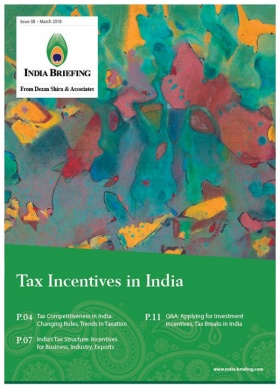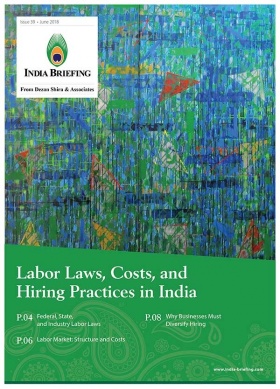Claiming GST Refund Made Easier in India
India is doubling its effort to ease the compliance burden of businesses under the goods and services tax (GST) system.
In its latest move, the country set the submission of GST return (GSTR)-2A form as the only prerequisite for claiming income tax credit (ITC) under the GST.
The previous rules required businesses to submit all purchase invoice relating to inputs, input services, and capital goods in the given month for processing of claims.
This made the process highly complex and tedious for businesses that had a large number of invoices per month.
Claiming refund using only one form – GSTR 2A will significantly reduce the refund processing time. It will also enable businesses, especially exporters and labor-intensive sectors, maintain cash liquidity required to carry out daily commerce activities.
What is GSTR-2A?
GSTR-2A is a monthly tax return statement that displays the purchases made by businesses for that month. The statement is auto-generated when a business makes purchases from a registered vendor.
That means, the information from the vendor’s sales return (GSTR-1) becomes automatically available in the GSTN portal as GSTR-2A for the business (buyer) to use it as their GSTR-2. GSTR 2A is an exact replica of the GSTR 2 format, containing only the details declared by the business’ suppliers in GSTR 1.
Before filing GST returns, businesses must check for any discrepancy in GSTR 2A, and add or modify information that is not auto-populated.
The changes made by buyers are reflected and notified to the vendor who can amend his or her returns using a GSTR-1A form.
What has changed?
Businesses can now use GSTR 2A as the only proof of the account of their supplies to avail ITC, given the form contains details of all the invoices.
In case GSTR-2A does not contain all details of the invoices for which ITC is being claimed, tax authorities have the right to ask for hard-copies of invoices.
Further, any adjustments on current or outstanding (valid) ITC amount not made by the refund sanctioning authority, can be done by the refund disbursing authority.
The new rules also clarify that a tax authority cannot deny ITC reimbursements on any grounds if the claimant has received green signal for the same from a counterpart tax authority, federal or state.
This is significant for businesses given the rising number of complaints filed last year where ITC claims were not disbursed on insubstantial grounds such as the validity of the primary sanctioning authority.
Types of GST refunds
The GST refund is available to businesses in the following scenarios:
- Excess payment of tax due to mistake or inadvertence;
- Refund of pre-deposit;
- Export with payment of integrated goods and services tax (IGST), under bond or letter of undertaking (LUT);
- Accumulation of ITC caused by output being tax exempt or nil-rated;
- Supplies made to units and developers in special economic zones;
- Inverted duty structure;
- Exports, including deemed exports;
- Refund arising on account of judgment, decree, order or direction of the appellate authority, appellate tribunal or any court;
- Refund due to the issuance of refund vouchers for pre-paid taxes against which goods or services haven’t been supplied;
- Refund of central (federal) GST and state GST paid by considering the supply in the course of the inter-state transaction; and
- Refund of tax paid on purchases made by the United Nation bodies or embassies.
The process to claim GST refunds in India
To claim GST refund, a business must file a refund application on GST portal in form RFD 01 within two years from the relevant date.
If the claim is in order, the applicant will receive an acknowledgment in form GST RFD 02 as well as an email and a mobile text, which specifies the date of filing the claim.
In case of a discrepancy in the refund application, the applicant will receive a form RFD-03 to rectify errors.
Prior to filing the claim, businesses must get the application certified by a chartered accountant or cost accountant if the amount of refund exceeds Rs 200,000 (US$ 2,773.7).
If the amount of refund claim is less than Rs. 200,000 (US$ 2,773.7), the applicant must submit a self-declaration to the effect that the incidence of tax has not been passed to any other person along with other documents.
The GST refund is sanctioned within a period of 60 days from the date of filing the claim. In the case of a delayed fund beyond 60 days, the government will pay interest at six percent per annum. If the interest is arising on account of delay for the reason of arbitration, the government will pay an interest of nine percent per annum on the refund amount.
Due dates for claiming GST refund
In case of excess payment of GST, the due date of claiming GST refund is the date of tax payment.
When ITC is accumulated due to output being tax exempted or nil-rated, businesses must file their claim on the last date of the financial year to which the credit belongs.
For claims on export or deemed export of goods and services, the due date is the date of – dispatch, loading, or passing the frontier.
Whereas, for claims on finalization of provisional assessment, the due date is the date on which tax is adjusted.
About Us
India Briefing is produced by Dezan Shira & Associates. The firm assists foreign investors throughout Asia and maintains offices in China, Hong Kong, Indonesia, Singapore, Vietnam, and Russia.
Please contact india@dezshira.com or visit our website at www.dezshira.com.
- Previous Article India Resident Foreign Companies to Pay 40 Percent Tax: Latest POEM Guidelines
- Next Article Delhi Land Pooling Policy Approved by DDA: What is it and How does it Work?











